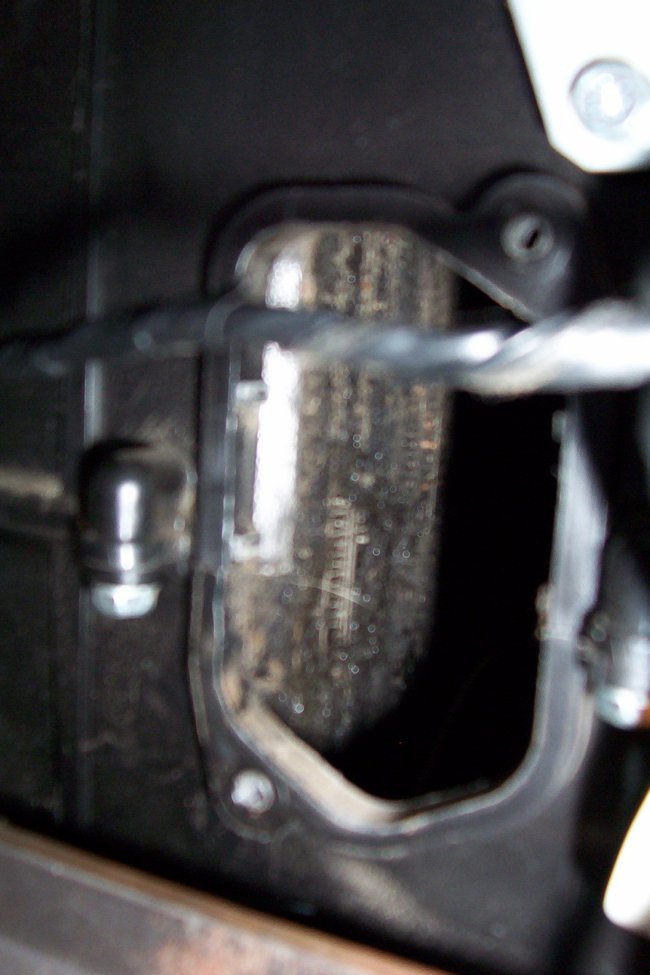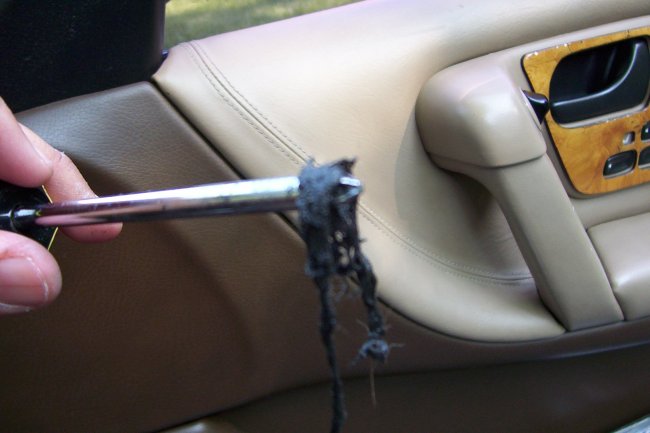|
No guarantees are made on the results, and anything you do yourself is
at your own risk.
Evaporator Cleaning
By Jesda Gulati
After a
few years, oil, dirt, and other debris will clog the fins on your
evaporator, which looks something like this:

Over time, however, it turns black and full of junk that collects in
the form of a thick gooey substance. I give credit to Dennis at T3
(Q45tech on NICO) for providing
a good portion this valuable information.
I used these tools:

A big fork, a philips head screwdriver, and a can of air. You may want
a flash light as well.
First, you need to remove the glove box. Start by opening it, then
unhook the two strings it hangs on. If you look inside the walls of
the glove box, you will see where the strings hang on hooks that you
can push downward and pop out.
Second, let the glove box dangle open all the way down, and you will
see two screws attaching it to a metal bar. Those screws are attached
to two hooks which then attach the hooks to the metal bar. Remove
those screws, then lift and pull the glove box at each hook to remove
it.
Next, you will see a black plastic panel where the glove box was. Go
around the area and remove all of them. They are black screws, two at
the top are plastic. After you remove the screws, the panel will come
out, and you must detach the light and trunk switch on the left.

You should now see something like this.

Zoomed in.
In the middle is a silver rectangular object with two screws and a
plug in the center of it. Unplug the connector and remove the two
screws. That is a fan speed sensor. Set it aside. At this point, turn
the fan on full speed, and a little dirt will blow out of the hole.
Make sure your face is directed away from it. Then go ahead and press
Off on the climate control unit.

There's a look inside at the evaporator, which is on the left inside
the hole that remains open after removing the fan speed sensor. At
first, before I shined a light on it, I figured it was just a plastic
wall. It was so caked up full of gunk, I had no idea it was even
there.
At this point, use your air can, fork, and screwdriver to careful
scrape the material from the fins. A portable vaccuum cleaner with an
attachment nozzle may be able to remove some of it more efficiently.

Here's a look at some of what I removed. I didnt get all of it, just
the parts that were easy to reach. I'll be going back in there later
with a vaccuum and doing a more thorough job.
The end result? Twice as much air flows out of the vents as before. I
get now a nice cool breeze instead of a faint sputter. I'll probably
replace the evaporator next year.
It is recommended that you have the AC evacuated so the evaporator can
be properly removed and cleaned, but this method, while less thorough,
saves time and money.
|





